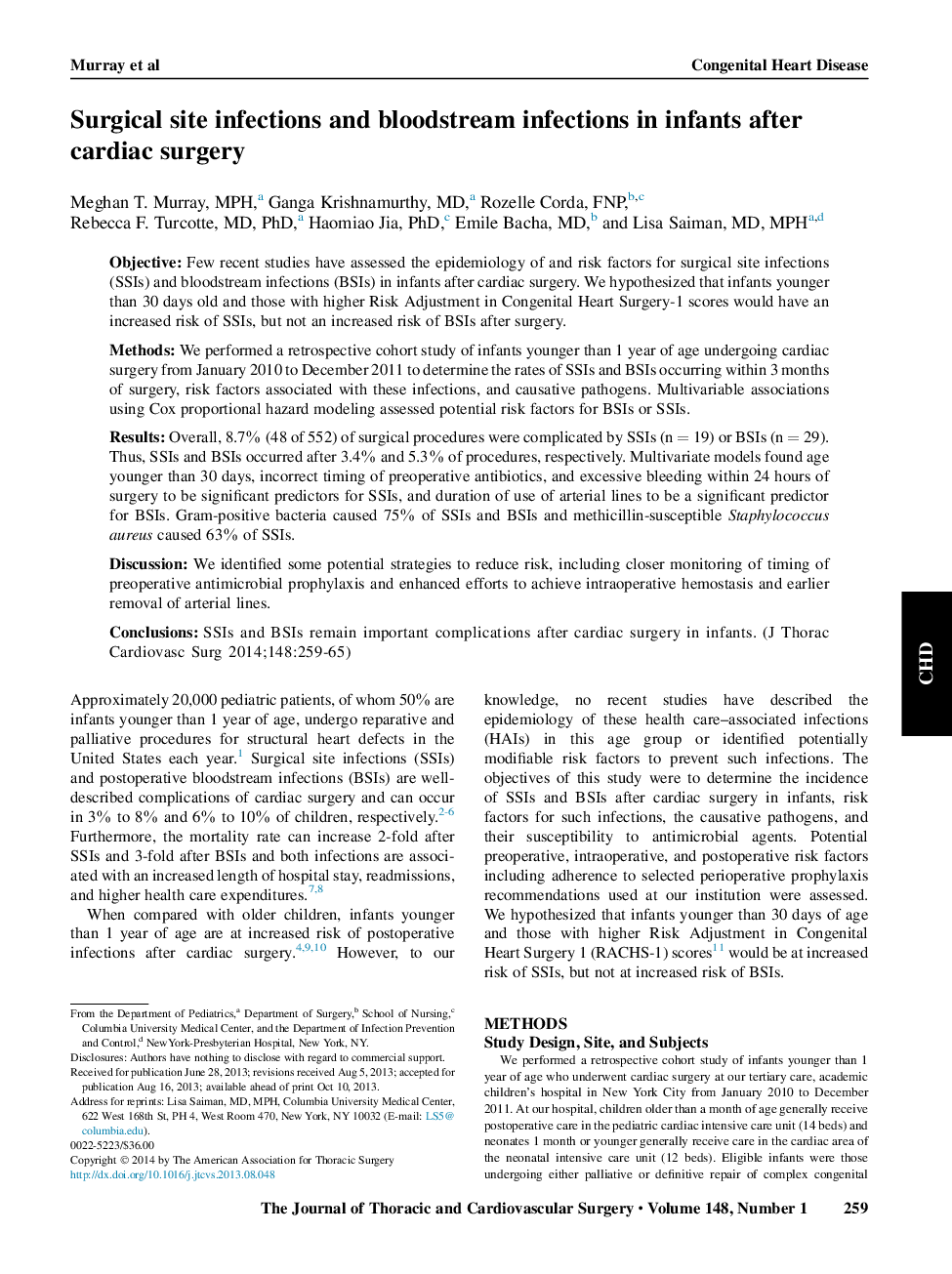| Article ID | Journal | Published Year | Pages | File Type |
|---|---|---|---|---|
| 2980775 | The Journal of Thoracic and Cardiovascular Surgery | 2014 | 7 Pages |
ObjectiveFew recent studies have assessed the epidemiology of and risk factors for surgical site infections (SSIs) and bloodstream infections (BSIs) in infants after cardiac surgery. We hypothesized that infants younger than 30 days old and those with higher Risk Adjustment in Congenital Heart Surgery-1 scores would have an increased risk of SSIs, but not an increased risk of BSIs after surgery.MethodsWe performed a retrospective cohort study of infants younger than 1 year of age undergoing cardiac surgery from January 2010 to December 2011 to determine the rates of SSIs and BSIs occurring within 3 months of surgery, risk factors associated with these infections, and causative pathogens. Multivariable associations using Cox proportional hazard modeling assessed potential risk factors for BSIs or SSIs.ResultsOverall, 8.7% (48 of 552) of surgical procedures were complicated by SSIs (n = 19) or BSIs (n = 29). Thus, SSIs and BSIs occurred after 3.4% and 5.3% of procedures, respectively. Multivariate models found age younger than 30 days, incorrect timing of preoperative antibiotics, and excessive bleeding within 24 hours of surgery to be significant predictors for SSIs, and duration of use of arterial lines to be a significant predictor for BSIs. Gram-positive bacteria caused 75% of SSIs and BSIs and methicillin-susceptible Staphylococcus aureus caused 63% of SSIs.DiscussionWe identified some potential strategies to reduce risk, including closer monitoring of timing of preoperative antimicrobial prophylaxis and enhanced efforts to achieve intraoperative hemostasis and earlier removal of arterial lines.ConclusionsSSIs and BSIs remain important complications after cardiac surgery in infants.
